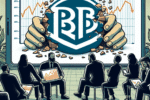Indianapolis, Indiana – Rumors surrounding a potential meeting between Rams quarterback Matthew Stafford and Raiders minority owner Tom Brady have sparked controversy at the Scouting Combine. The conflicting reports have ignited a debate over whether the visit was a chance encounter or part of a recruiting strategy. The situation escalated when reporters Jordan Schultz and Ian Rapoport clashed at a Starbucks in Indianapolis.
Following Schultz’s claim that Brady had hosted Stafford, Rapoport dismissed it as a mere coincidence. The tension between the two reporters culminated in a public confrontation, prompting NFL Media’s Tom Pelissero to seek clarification from Brady’s agent, Don Yee. Yee swiftly denied the rumor, emphasizing the importance of accuracy in reporting.
The dispute raised questions about the credibility of the initial report and the potential ramifications for Brady. Furthermore, the incident shed light on the complexities of tampering in the NFL. While tampering is not uncommon, blatant violations can lead to significant penalties, as evidenced by the Dolphins’ suspension and loss of draft picks for tampering with Brady in the past.
The crux of the matter lies in whether Stafford’s visit to Brady’s home adhered to the terms set by the Rams. Coach Sean McVay’s recent comments hint at the Rams’ desire to retain Stafford and align their offer with market standards. The repercussions of unauthorized recruitment efforts could jeopardize the Rams’ negotiating position with Stafford, highlighting the importance of upholding tampering regulations.
Ultimately, the outcome hinges on the willingness of teams to make viable trade offers and competitive contract proposals to Stafford. The situation underscores the challenges posed by tampering rules in preserving fair competition and integrity in the NFL. As the controversy unfolds, the league faces a critical test in enforcing its regulations to maintain a level playing field for all teams involved.









